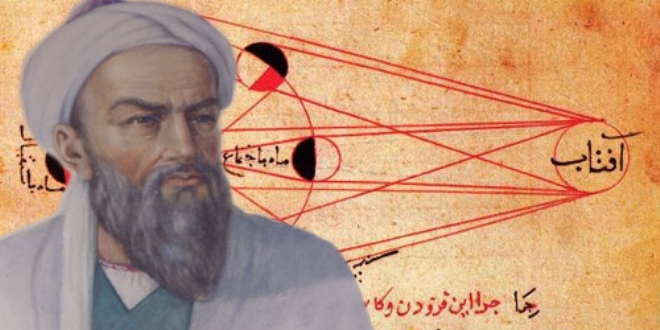Einstein of the Islamic world: Who is Al Kindi?
Al Kindi, one of the greatest philosophers of the Islamic world and known as 'Alchindus' in medieval Europe; synthesized the work of the giants of philosophy, such as Plato and Aristotle.

Arguing that the first step of knowledge is 'reasoning', Kindi explained that the method of philosophy is to prove, the aim of proof is to understand the essences that shape and give meaning to matter, and the aim of philosophy is to approach God.
NOTES
His full name is Abu Yusuf Yakub Ibn Ishaq al Kindi.
He became known as Kindi because he came from the famous Kinde tribe of Southern Arabia.
He died in Baghdad in 867.
He explained the theory of relativity centuries before Einstein.
He used a compass for the first time to measure angles.
He explained the phenomenon of vision and determined what dose of drugs in nature should be given.
He was known as the "Philosopher of the Arabs" because of his works.
Kindi, who was the first person to find the Theory of Relativity, started the Peripatetic philosophy movement, which gave great importance to the mind. Kindi, who wrote nearly 300 works in different fields, has seventeen works translated into Latin and four into Hebrew. He was born into a noble family around the year 800 in Kufa, which is located within the borders of Saudi Arabia today. His father was a civil servant working for Harun Rashid, the Islamic caliph of the time. The tribe he belonged to was a tribe that later converted to Islam and settled in Kufa. The father of al-Kindi, whose grandfather was the leader of this tribe, also served as the governor of Kufa for a long time.
Kindi first studied language and literature in Kufa and Basra. Kindi, who lived at the same time as Al-Mamun, Al-Mutasim, and Al-Mutawakkil, entered the Beytu'l-Hikme founded by the Abbasid Caliph Memun in 830. Kindi, who was on the translation team here, translated works from Greek and Indian culture, especially in the field of philosophy, into Arabic. In this period, he added his own ideas to the translations and began to produce works of his own. By rejecting the Greek theory of theory, he put his system of thought on a mathematical basis and produced new ideas. He was appointed as a calligrapher by Mütevekkil. Abu Ma'şer trained scientists such as Ja'far bin Muhammed Belhi, Hasneveyh, and Naftuye.
Kindi, who was supported by the members of the Mutezile sect, was removed from the palace and Beyt'ül Hikme during the rule of Mutawakkil, and his books were confiscated. Died in 873 during the reign of al-Mutamid
He wrote two hundred and seventy-seven works!
In addition to being a philosopher, al-Kindi was a mathematician, physicist, astronomer, doctor, and geographer. He wrote 277 works in twenty different branches, from philosophy to medicine, from mathematics to astronomy, from theology to politics, from psychology to dialectics, from astrology to divination, and from optics to chemistry!
Because of his works, he was known as the philosopher of the Arabs. Now, let's take a look at his work in the areas where he sweats. Mathematics: He wrote 4 books on the number system and laid the foundation for modern arithmetic. He also contributed to spherical geometry in his work on astronomy. He first came up with the idea of measuring angles with a compass.
Physics and Chemistry: He opposed the idea that some metals could be converted into precious metals, arguing that chemical reactions could not lead to transformation in the elements. Kindi, who also contributed to geometric optics in the field of physics, wrote a book in this field. He discovered that the propagation of light is not time-limited. He found that vision is caused by a beam of light that expands and conically diffuses from the eye and surrounds the object. He calculated the specific gravity of liquids. He experimented with shooting and falling subjects. He also worked on weather forecasts and wrote works on this subject.
He explained the Theory of Relativity centuries before Einstein, revealing that the physical events of all beings are relative, that time, space, and motion are not independent of each other, and that they are all relative events that are connected to each other. He argued that matter is related to time, time to object, space to movement, and movement to space, and therefore all of them are related to each other and that they are not independent and have no priority over each other.
Medicine: He determined the doses to be administered for all drugs that were known and used at that time.
Music: He found that the various notes combined to produce harmony each have a specific pitch. He suggested that the degree of harmony depends on the frequency of the notes since notes that are too low or too high in pitch are not pleasing to the ear. He also discovered that when a sound is made, it creates waves in the air that hit the eardrum. He wrote a book on the setting of the pitch containing a compositional method.
